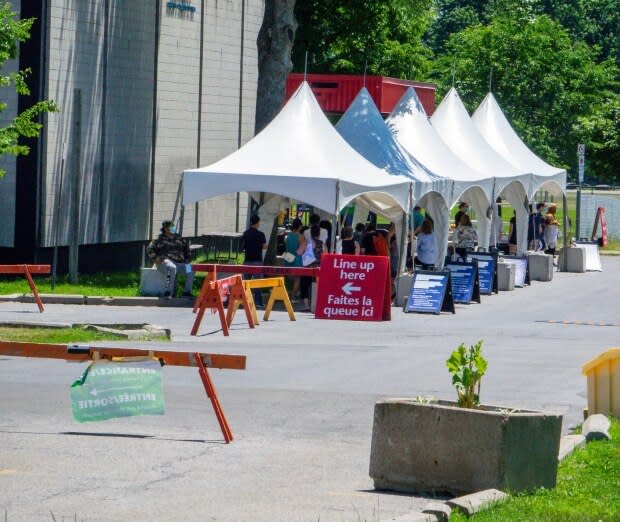3 COVID misconceptions Ottawa Public Health would like to clear up
As people continue to adjust to a lifestyle with COVID-19 in their midst, Ottawa Public Health is advising residents about how to protect their social circles and when it's best to get a test.
Cases of COVID-19 in Ottawa might be lower than the consistent double-digit daily reports of a couple of weeks ago, but officials still report that large groups gathered, outdoors, over the August long weekend without masks or physical distancing.
"This virus has been with us for the past five months and many of us just want to get out and enjoy socializing with friends," associate medical officer of health Brent Moloughney said Wednesday.
"But I can't stress enough that we must be wise about how we socialize."
That means limiting the number of people you entertain in your backyard or at your cottage if you can't keep a distance of two metres. Treat your mask and hand sanitizer as valuables the way you would your wallet and mobile phone. Leave a scenario you feel uncomfortable in, and get tested if you feel unwell, Moloughney said.
Risks of larger gatherings
Moloughney thinks a key message might not have been "loud and clear" when the provincial government increased the size of gatherings to 50 people indoors and 100 outdoors as part of the Stage 3 reopening in mid-July.
"Yes, you can have gatherings, and yes there's larger limits that the province has given, but physical distancing is still part of that," explained Moloughney.
Fifty people would require a lot of indoor space if people keep their two-metre distance, he noted.
Gatherings are distinct from "social circles", the small group of 10 or fewer consistent people who are members of your household plus a few chosen others.
Moloughney explains a social circle comes with an agreement and a sense of reciprocity that you protect the small group by wearing a mask or keeping your distance with anyone outside of it.

When to get a test
Ottawa's three testing centres have seen steadily increasing demand over the past month — in the middle of last week they were conducting about 1,600 tests per day.
The Queensway-Carleton Hospital's care clinic on Moodie Drive, for instance, was originally set up for 200 patients per day but consistently saw more than 400 in July. That's because of more people showing up, and a change in who is eligible for testing, according to a statement from the hospital.
The wait can be between 30 minutes and four hours for a test, so the Champlain region's COVID-19 response committee (CCRC) is looking to add staff, extend hours, or possibly create new sites to meet the demand.
In the meantime, Moloughney said he's spoken with those who are running the test sites who say some individuals are "using the test in ways that are less than ideal."
One situation sees people get in line for the test immediately after fearing they were exposed, but before a few days have elapsed so that the virus can be detectable by a throat or nose swab.
"If you're concerned, if you're worried, for sure get tested. But really that should be about five days after you've been exposed," said Moloughney.
Relief after a negative test
A final misconception that Moloughney sought to clear up relates to those who test negative for COVID-19.
Some people might seek the reassurance of a test to visit loved ones or start a new job, but it's tricky, he said.
"The result only gives you an answer for the day that you were tested as to whether there were sufficient virus in the back of your throat."
It's still possible that you were infected a couple of days prior, but the illness wasn't far enough along to show up on a test. Or, you could become exposed after the test.

